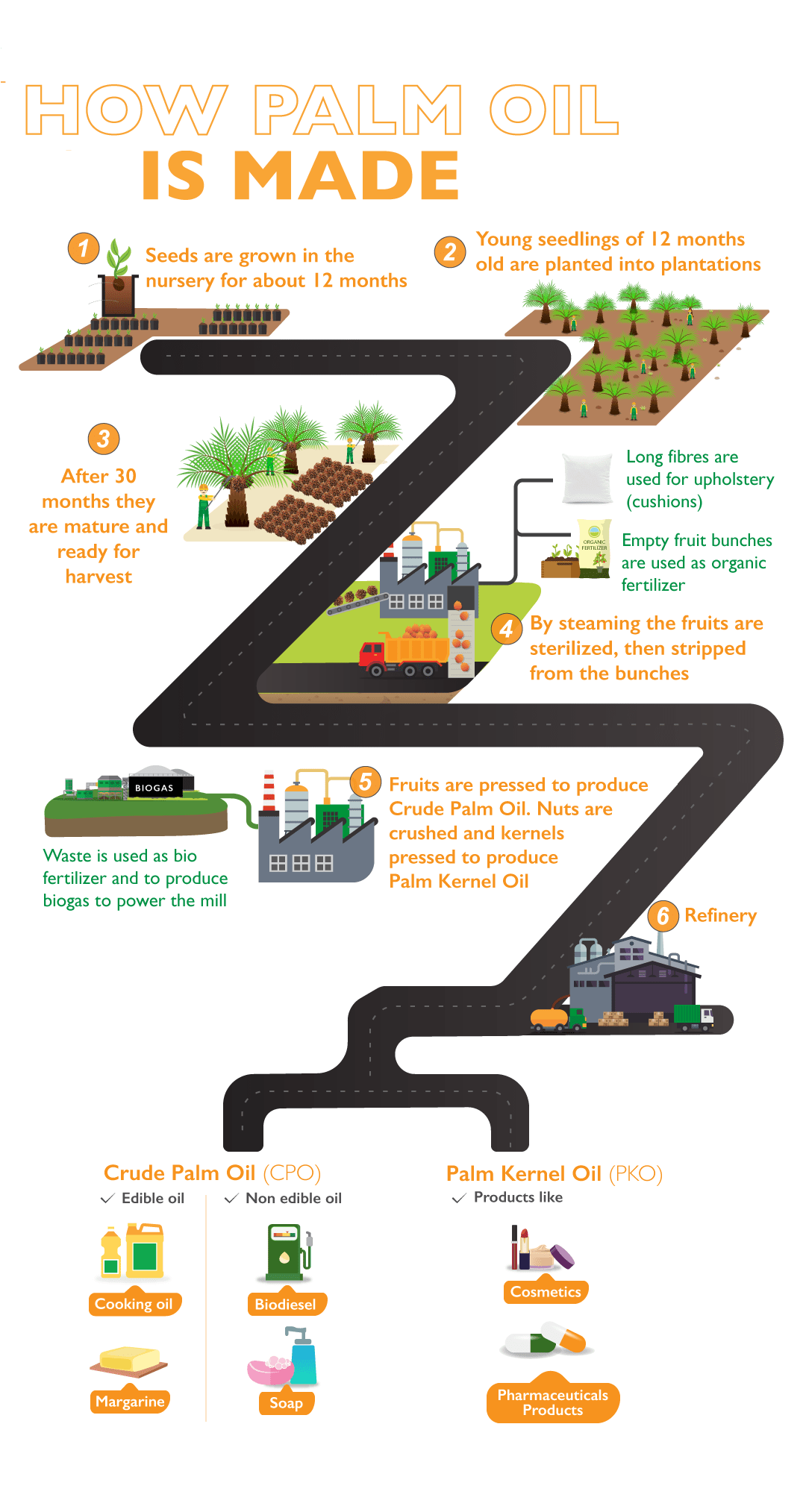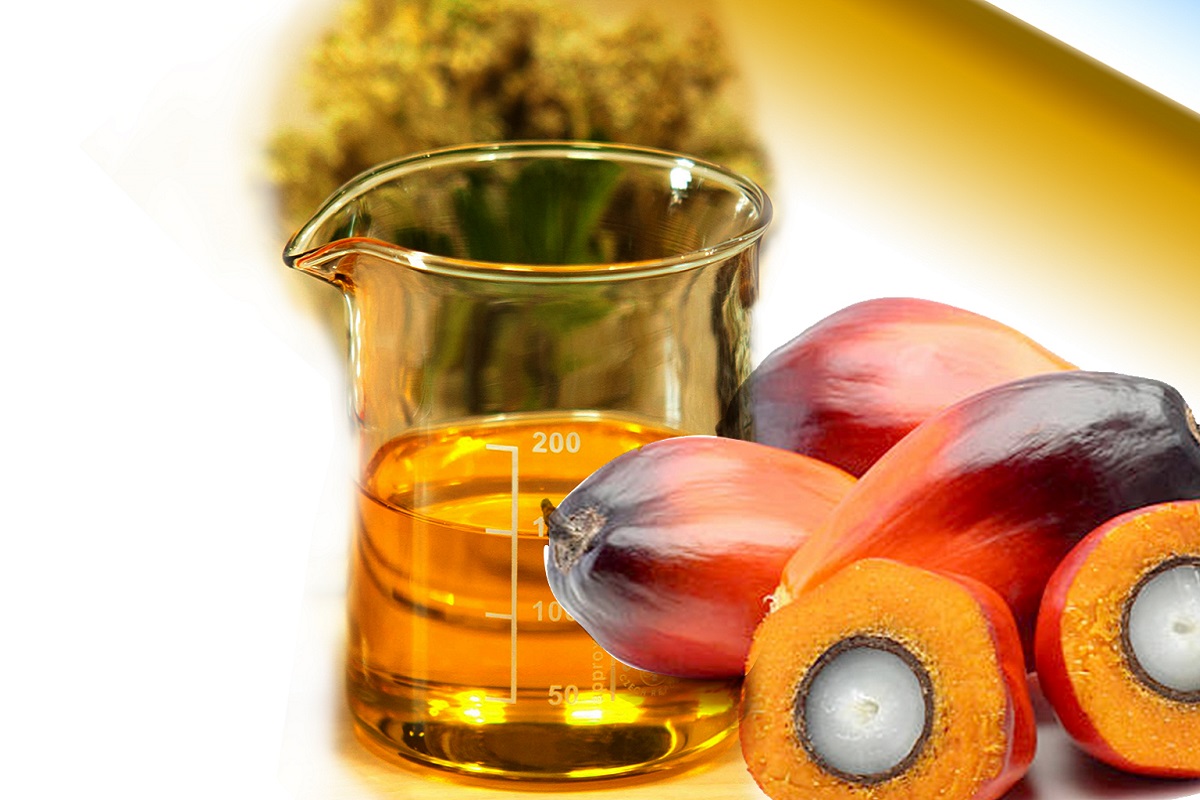Definition: Palm oil is an edible oil that is extracted from the pulp of the fruit of oil palms. The color of the pulp is red. That’s why crude palm oil is naturally similar to pulp color because of high inactive vitamin A content. It is different from kernel oil or coconut oil. Commonly it is combined or mixed with coconut oil to make highly saturated vegetable fat, which is also used for cooking purposes.
Description: The main usage of CPO is for cooking purposes and is largely used in South-East Asia, West Africa, and some parts of Brazil. Commercial kitchens use it due to its low cost. It’s not as healthy as its counterparts due to the high content of saturated fats. The largest producer of CPO is Indonesia, Malaysia, Nigeria, and Columbia. They are major exporters of palm oil. It is also used for making biodiesel and one of its by-products is Glycerin.
But how is palm oil made? Palm oil production begins with palm oil seeds. As oil palms have a productive life of 25-30 years, the choice of seeds will impact production for decades to come. After many years of research, some seeds produce higher yields and are more resistant to pests than regular oil palms, increasing the productivity of oil palm plantations.
